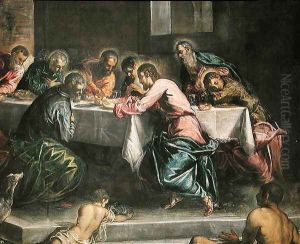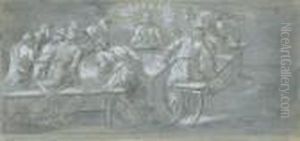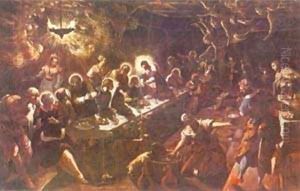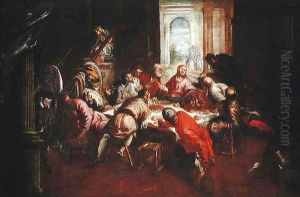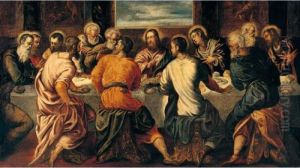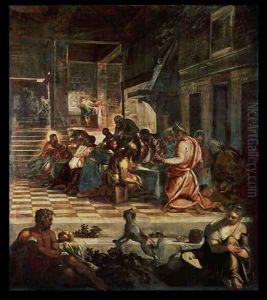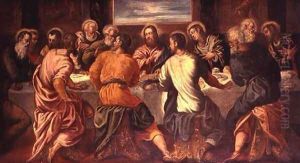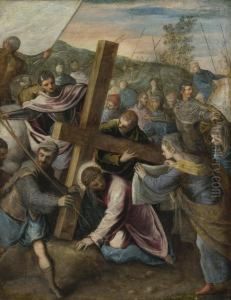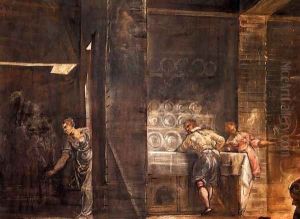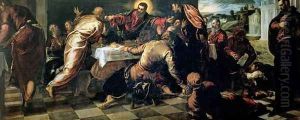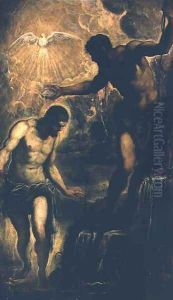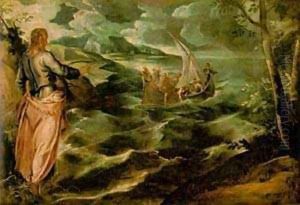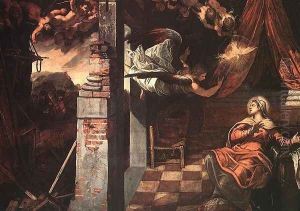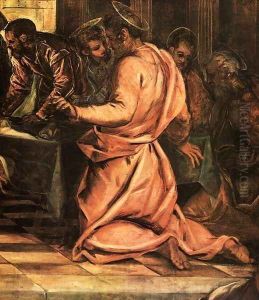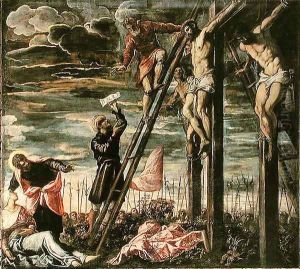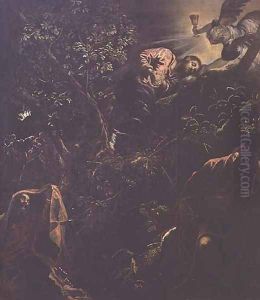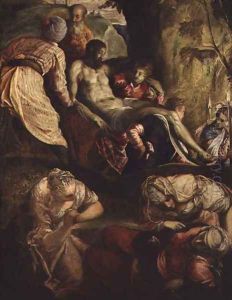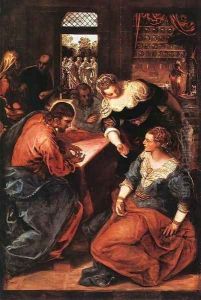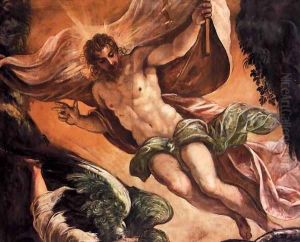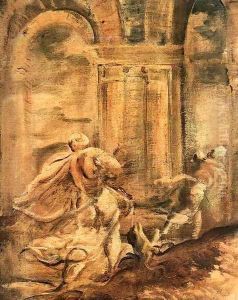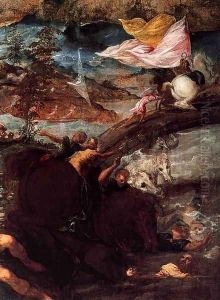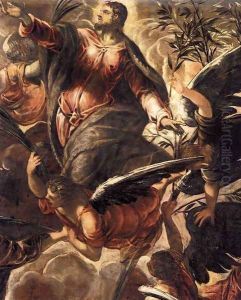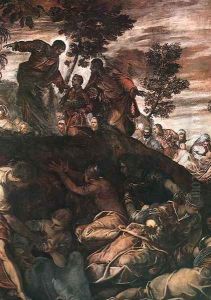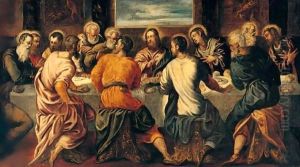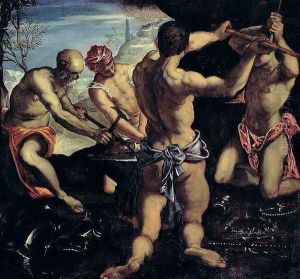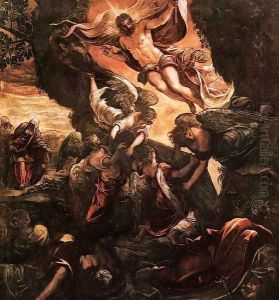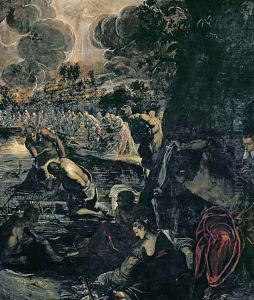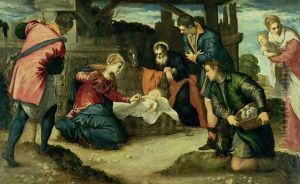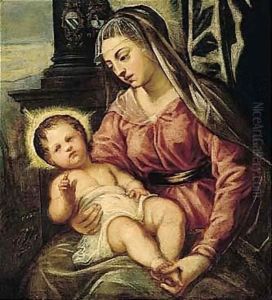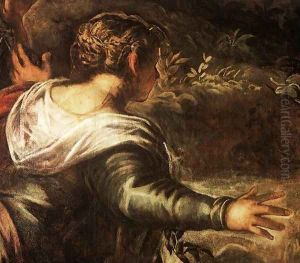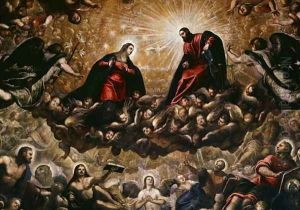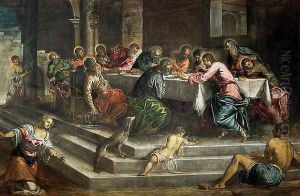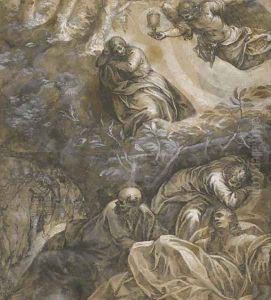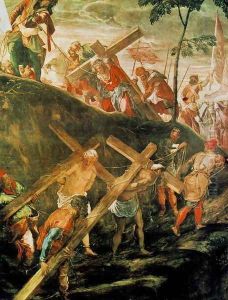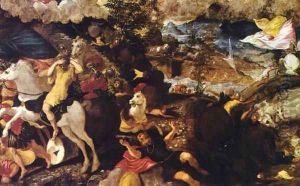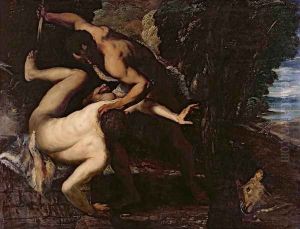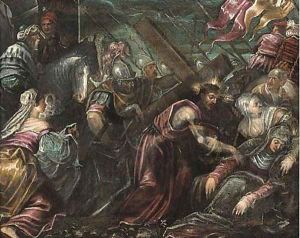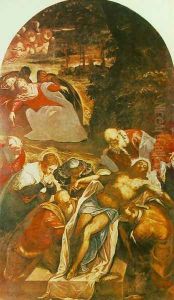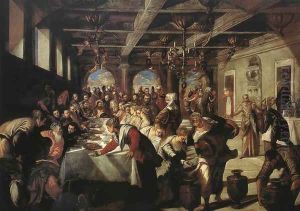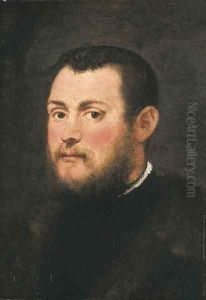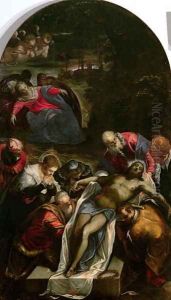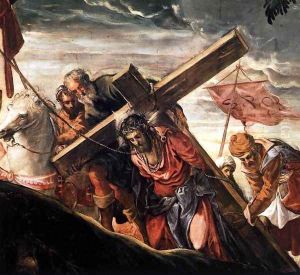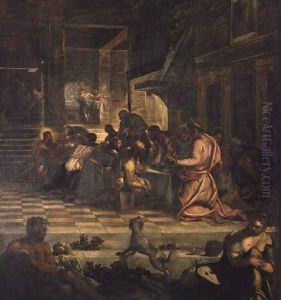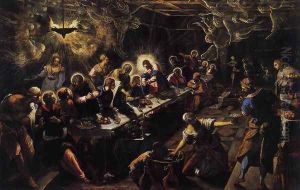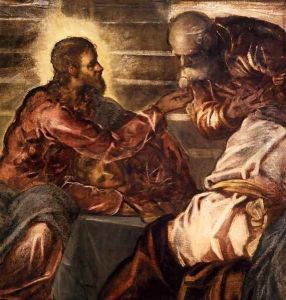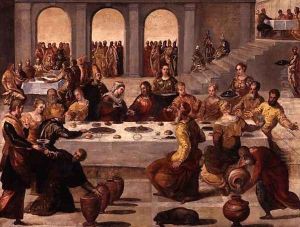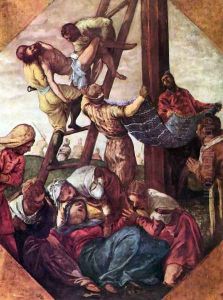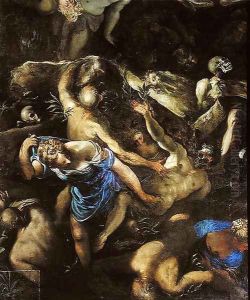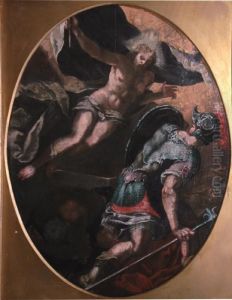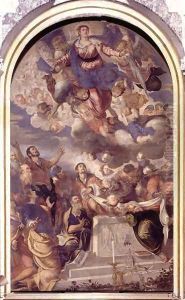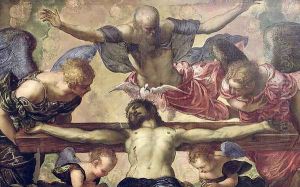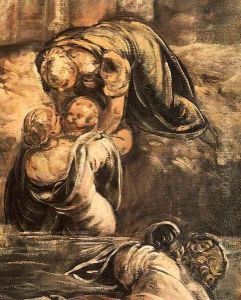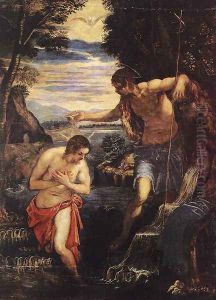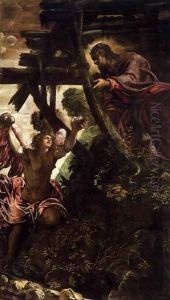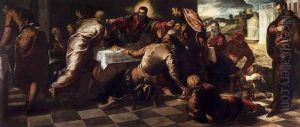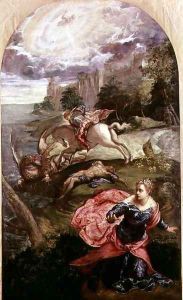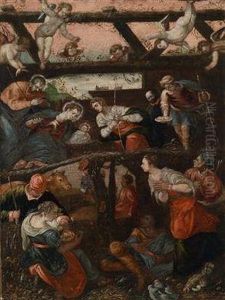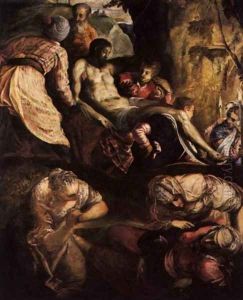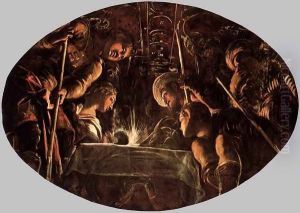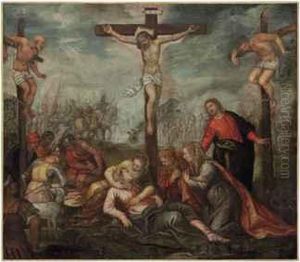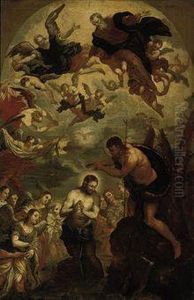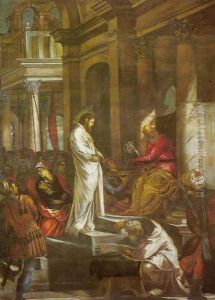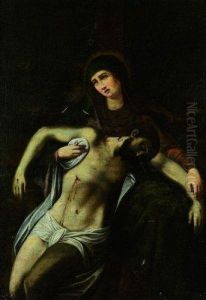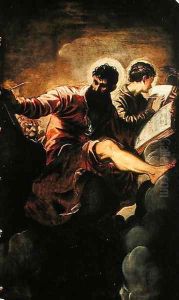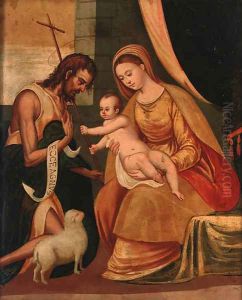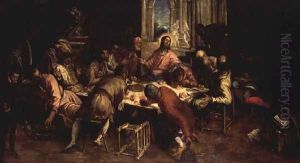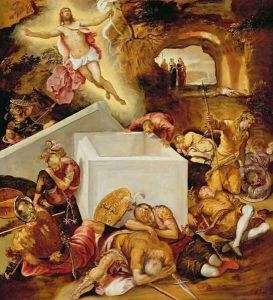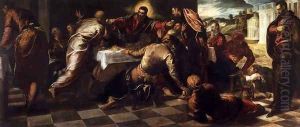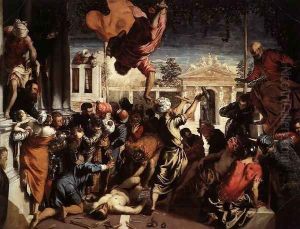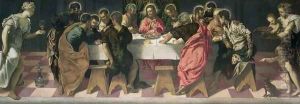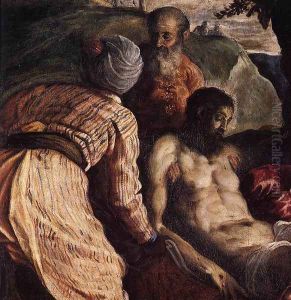Jacopo Tintoretto (Robusti) Paintings
Jacopo Tintoretto, born Jacopo Comin, was also known as Jacopo Robusti, as he was reputedly the son of a defender or 'robust' sentinel. Tintoretto was an Italian painter and a notable exponent of the Renaissance school. Born in Venice in late September or early October 1518, Tintoretto was recognized from a young age for his exceptional artistic talent. His father, a dyer by profession, is believed to have influenced his nickname 'Tintoretto,' which means 'little dyer' or 'dyer's boy.'
Tintoretto's initial training was under the tutelage of Titian, the most renowned Venetian artist of his day, but the apprenticeship lasted only a few days, as Titian allegedly dismissed him because of his distinctive and untamed style. Tintoretto was heavily influenced by the works of Michelangelo and sought to combine Michelangelo's drawing and monumental style with Titian's color and sense of surface.
Throughout his career, Tintoretto was known for the remarkable speed with which he painted, and for the boldness of his brushwork. He was famed for his energetic painting style, characterized by dramatic lighting and powerful gestures. Tintoretto worked on a variety of religious and mythological subjects, and he was particularly adept at large-scale narrative cycles. He executed numerous works for the Scuola di San Rocco and the Scuola Grande di San Marco, as well as for many Venetian churches, such as the Madonna dell'Orto and the San Giorgio Maggiore.
Tintoretto's most famous works include 'The Miracle of the Slave' (1548), 'The Last Supper' (1592-1594), and the 'Paradise' (1588), which is one of the largest oil paintings ever created and adorns the walls of the Palazzo Ducale in Venice.
Despite his prolific work and success, Tintoretto was known to be a very private person. He led a humble life, with his art and family being the centers of his world. He married Faustina de Vescovi, who bore him several children, including Domenico and Marietta Robusti, who were also painters.
Tintoretto died on May 31, 1594, in Venice. His legacy is that of a master of Mannerism, with a distinctive style that was ahead of its time and would influence generations of artists to come.
